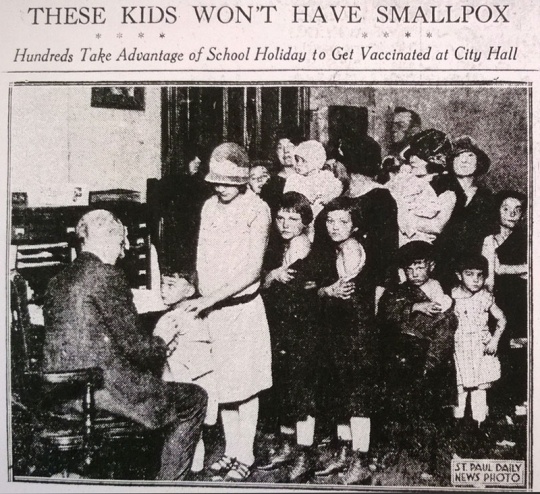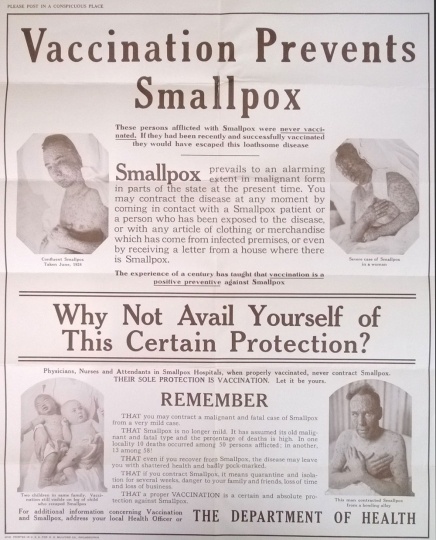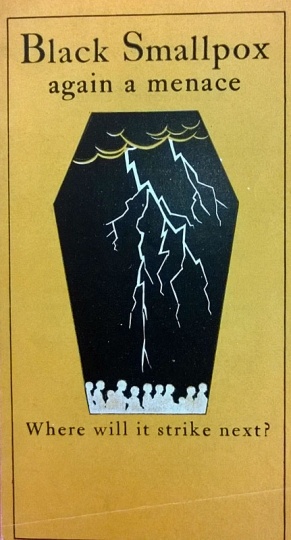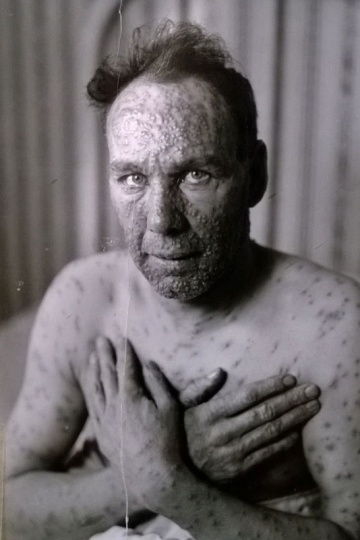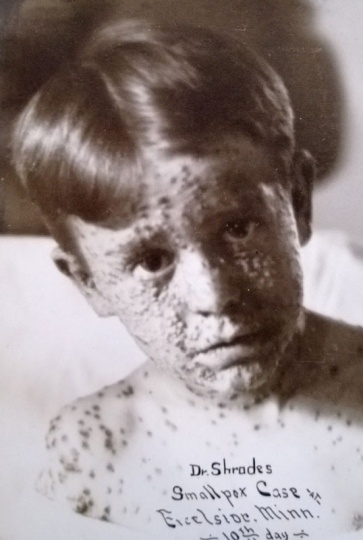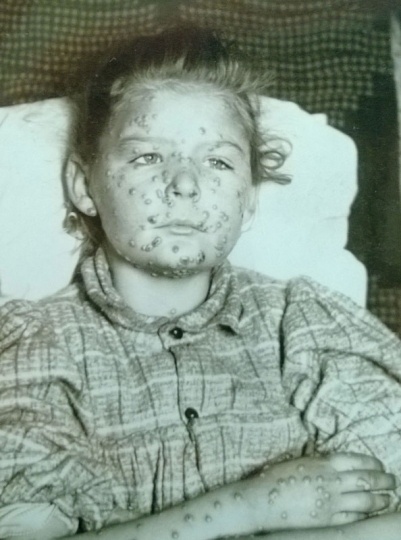Smallpox Epidemic, 1924–1925
Headline and accompanying photograph printed in the November 6, 1924 edition (page 10) of the St. Paul Daily News. The story that follows described the vaccination of hundreds of children and adults against smallpox. The vaccinations were carried out in the basement of the St. Paul courthouse. The photograph shows deputy health commissioner Dr. Nichols (first name not specified) vaccinating patient Donald Hirsch as his sister, Sylvia Hirsch, looks on.
Bibliography
Chesley, Albert J. "Minnesota's Experience with Smallpox." Presented at the Conference of State and Provincial Health Authorities of North America, Montreal Canada, June 5, 1925. [St. Paul: Minnesota State Department of Health, 1925].
Published Records and Reports, 1872–1972, 1995–1997
Minnesota Department of Heatlh
State Archives Collection, Minnesota Historical Society, St. Paul
http://www.mnhs.org/library/findaids/hlthpub.pdf
Description: See State Board of Health pamphlets "Minnesota's Experience with Smallpox of the Malignant Type," and "Report on Special Investigation of Smallpox in Minneapolis and St. Paul, 1924–25."
Nelson, Paul D. "A Harvest of Victims: The Twin Cities and St. Paul's Traumatic Smallpox Epidemic of 1924." Ramsey County History 38, no. 2 (Summer 2003): 10–20.
Chronology
c.1500
1796
1871–1872
1881–1882
1883
1903
1923
January, 1924
December 4, 1924
1925
1941
Bibliography
Chesley, Albert J. "Minnesota's Experience with Smallpox." Presented at the Conference of State and Provincial Health Authorities of North America, Montreal Canada, June 5, 1925. [St. Paul: Minnesota State Department of Health, 1925].
Published Records and Reports, 1872–1972, 1995–1997
Minnesota Department of Heatlh
State Archives Collection, Minnesota Historical Society, St. Paul
http://www.mnhs.org/library/findaids/hlthpub.pdf
Description: See State Board of Health pamphlets "Minnesota's Experience with Smallpox of the Malignant Type," and "Report on Special Investigation of Smallpox in Minneapolis and St. Paul, 1924–25."
Nelson, Paul D. "A Harvest of Victims: The Twin Cities and St. Paul's Traumatic Smallpox Epidemic of 1924." Ramsey County History 38, no. 2 (Summer 2003): 10–20.








